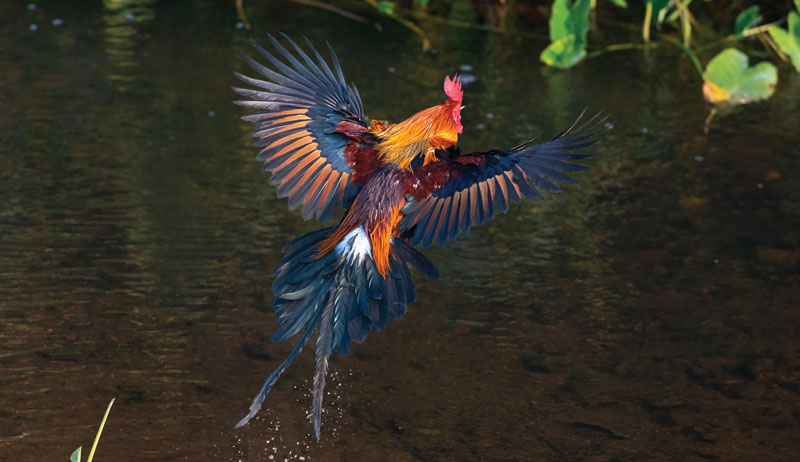We take for granted our relationship with chickens. After all, more than 23 billion chickens live on the planet right now. And, globally, we consume more than 65 billion chickens each year. That doesn’t include the more than 800 billion eggs we eat every year.
In fact, more chickens exist in the world than any other domesticated or wild vertebrate species in number and biomass. They provide us with food at multiple levels from mega farms to humble backyards all over the world.
Village poultry (i.e., “backyard” chickens in Africa and Asia) are an essential source of protein and income for millions of people.
The ubiquity of chickens wasn’t always so, though. In fact, until the recent African swine fever outbreak in China in 2018, pigs were the most consumed animal protein on the planet.
The point is that the scope of chicken meat and egg consumption wasn’t always at its present level. So why is this so?  Independent birds/Shutterstock
Independent birds/Shutterstock
Rise of Village Poultry
From a historical perspective, humans have only lived in villages—as opposed to being hunter-gatherers—for approximately 10,000 years. And chickens have been with us as domesticated animals for approximately 7,000 to 8,000 of those years.
However, the reasons we brought them into our villages are probably different than what we might guess thousands of year later.
Specifically, chickens were domesticated not for dinner purposes but for status, religious ceremony and entertainment (i.e., fighting). In fact, the best fighting birds were often buried with the high-status elders.
From a more practical perspective, roosters were also used as timepieces. Crowing roosters proclaimed the hour of dawn.
Once established in the culture of these emerging societies, various cultures then spread them via migration, trade and territorial conquests to various locations including Europe in 3000 B.C. and South America in 1200 A.D.
One of the reasons chickens were largely ceremonial as opposed to dinner is their appearance. The humble chicken wasn’t so humble back then. It was a smaller, flightier bird with long, colored, beautiful feathers.
In other words, you’d want to show it off as opposed to stick it in a barn. You can see the living ancestors to modern chickens—red jungle fowl—with a trip to modern-day India, Bangladesh or Sri Lanka.
Based on how stunning red jungle fowl appear, it might make more sense why humans would prefer to hunt wild animals. And why they’d keep farm-domestic animals, such as sheep and goats, for milk and meat instead. It somewhat explains why a culture would learn how to farm grains on the same plot of land, too.
That way, they could just “show off” their chickens.
Read more: Interested in raising show chickens for poultry exhibition? Here’s how to get started.
Transition to Domestication
There isn’t a lot of research on this, but slowly but surely chickens—and their eggs—were used as sources of protein and fertilizer. One thing that helped…

